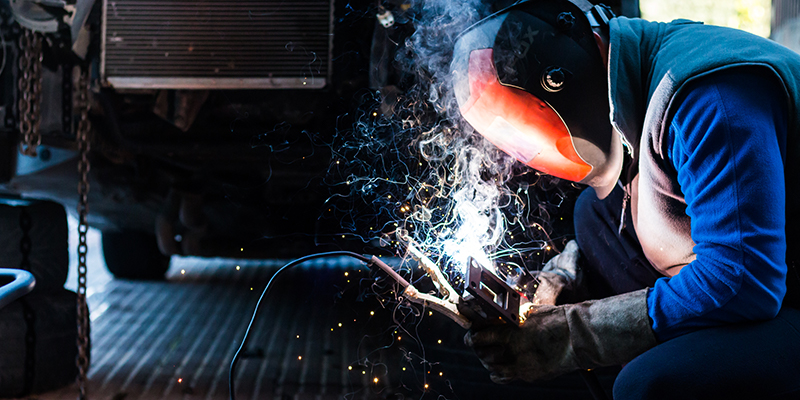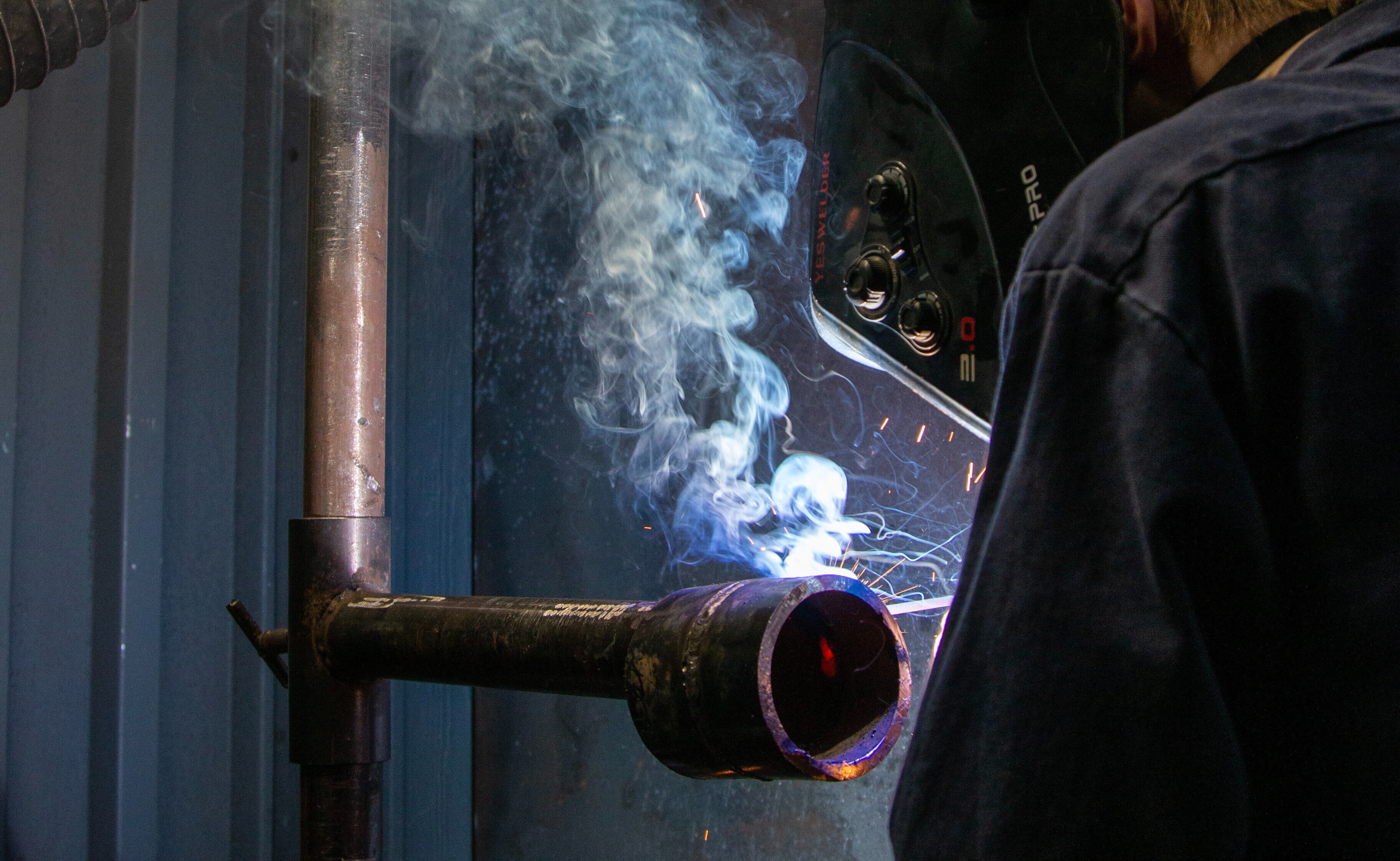Typical Welding Repair Issues and Just How to Address Them Successfully
Welding repair services typically run into a series of issues that can threaten the integrity of the last product. Usual issues consist of insufficient penetration, porosity, and misalignment, to name a few. Each problem provides distinct difficulties that require particular strategies for resolution. Recognizing these problems is important for welders intending to improve their skills and results. This discussion will certainly discover these usual welding fixing problems and efficient approaches to resolve them.
Insufficient Penetration
Poor penetration occurs when the weld steel stops working to completely fuse with the base product, leading to weak joints and possible architectural failures. This problem often comes from not enough heat input, wrong electrode angle, or improper welding speed. Welders might experience inadequate penetration because of a miscalculation of the required specifications for a certain material thickness or type. Furthermore, contamination on the base material's surface area can impede efficient bonding, worsening the trouble. To resolve inadequate infiltration, welders must guarantee suitable setups on their equipment and keep a tidy work surface. Normal inspection of welds is recommended to recognize any deficiencies early, enabling prompt improvements and the prevention of jeopardized structural integrity in bonded assemblies.
Porosity
Porosity is a typical flaw in bonded joints that shows up as little gas bubbles trapped within the weld steel. This defect can jeopardize the honesty of the weld, causing lowered strength and possible failure under anxiety. Montana Mobile Welding and Repair Belgrade Fabrication. Porosity generally develops from contamination, moisture, or improper welding methods, which permit gases to get away into the liquified weld pool. To address porosity, welders need to guarantee appropriate surface area preparation, maintain a clean workplace, and use appropriate welding parameters. Furthermore, selecting the appropriate filler material and securing gas can minimize gas entrapment. Normal evaluation and screening of welds can help identify porosity early, assuring prompt restorative activities are taken, consequently preserving the high quality and integrity of the welded structure
Imbalance
Imbalance in welding can arise from numerous elements, including inappropriate configuration and thermal growth. Recognizing the origin causes is crucial for effective resolution. Numerous modification techniques are available to realign parts and assure architectural integrity.
Reasons for Imbalance
Welding misalignment frequently stems from a range of underlying issues that can endanger architectural integrity. One key cause is incorrect fit-up of elements before welding, which can lead to spaces and uneven surface areas. Variations in thermal expansion during the welding procedure can likewise cause distortion, specifically if the products being joined have different coefficients of development. In addition, insufficient securing and fixturing may fail to hold components securely in place, bring about movement during welding. Improperly kept tools, consisting of welding equipments and devices, might present variances in the weld bead, additional adding to imbalance. Driver error, stemming from not enough training or experience, can likewise play a considerable function in producing misaligned welds.

Adjustment Methods Available
Attending to imbalance effectively calls for a mix of corrective methods customized to the details concerns available. One usual technique is making use of jigs or fixtures to hold parts in the correct setting during welding, guaranteeing regular placement. Additionally, preheating the materials can help in reducing distortion and enhance fit-up. For considerable imbalance, mechanical realignment techniques, such as utilizing hydraulic jacks or clamps, can be employed to correct the placement before welding. Post-weld warm treatment might additionally be needed to ease anxieties triggered by imbalance. Careful inspection and modification throughout the configuration stage can protect against misalignment concerns from ending up being substantial troubles, promoting a smoother welding procedure and enhancing total architectural integrity.
Distortion
Distortion is an usual challenge in welding that can emerge from various elements, including irregular heating and cooling. Recognizing the reasons for distortion is important for executing reliable prevention techniques. Resolving this concern not only enhances structural stability yet also improves the total high quality of the weld.
Reasons for Distortion
When based on the extreme warm of welding, materials usually go through changes that can lead to distortion. This sensation primarily arises from thermal growth and tightening during the welding procedure. As the weld area warms up, the material broadens; upon air conditioning, it contracts, which can develop interior stresses. On top of that, irregular heating across a workpiece can worsen these stresses, resulting in bending or bending. The kind of product additionally plays a significant duty; steels with varying thermal conductivity and coefficients of development might react in different ways, bring about unpredictable distortions. Additionally, inadequate joint style and inadequate fixturing can add to imbalance throughout welding, increasing the likelihood of distortion. Comprehending these causes is essential for reliable welding fixing and avoidance techniques.
Prevention Techniques
Reliable avoidance techniques for distortion throughout welding emphasis on managing heat input and guaranteeing correct joint design. Keeping a constant warm input assists to decrease thermal growth and tightening, which can lead to distortion. Using strategies such as pre-heating the workpiece can also minimize the temperature slope, promoting uniform home heating. Furthermore, selecting proper joint styles, such as T-joints or lap joints, can enhance stability and minimize stress and anxiety concentrations. Executing appropriate fixturing to safeguard the workpieces in area even more help in keeping placement throughout the welding process. Lastly, staggered welding series can distribute warmth extra equally, protecting against localized distortion. By using these strategies, welders can significantly reduce the possibility of distortion and improve the overall quality of their welds.
Splitting
Splitting is a typical issue run into in welding fixings, frequently arising from various variables such as inappropriate air conditioning prices, product selection, or poor joint preparation. The incident of fractures can substantially jeopardize the integrity of the weld, leading to prospective failures throughout operation. To address this concern, welders have to first assess the origin, making sure that products are suitable and appropriately selected for the details application. Furthermore, controlling the air conditioning price during the welding procedure is important; fast air conditioning can generate stress and lead to cracking. Proper joint layout and prep work additionally add to minimizing the danger. Carrying out these approaches can enhance weld quality and longevity, eventually reducing the possibility of cracking in finished weldments.

Incomplete Combination
A considerable issue in welding repair services is insufficient combination, which occurs when the weld steel does not adequately bond with the base material or previous weld passes - Montana Mobile Welding and Repair Belgrade Fabrication. This issue can lead to weak points in the joint, potentially jeopardizing the integrity of the welded structure. Aspects contributing to insufficient fusion include inadequate warmth input, improper welding method, and contamination of the surfaces being joined. To address this problem efficiently, welders must ensure appropriate pre-weld cleaning and surface area prep work, as well as change their welding criteria to accomplish adequate infiltration and blend. Regular evaluation throughout the welding procedure can likewise help determine insufficient blend early, permitting timely corrective measures to improve the general top quality of the weld
Overheating
While welding repair services can enhance structural honesty, overheating presents a substantial difficulty that can cause material degradation. Extreme warmth throughout welding can modify the mechanical buildings of metals, resulting in decreased toughness, enhanced brittleness, and bending. This sensation is particularly essential in high-stress applications where structural dependability is extremely important. Determining overheating can involve visual examinations for staining or distortion, along with checking temperature throughout the welding process. To reduce the threats connected with getting too hot, welders need to employ suitable methods, such as regulating warmth input, adjusting travel speed, and using suitable filler products. In addition, applying pre- and post-weld heat therapies can assist recover material buildings and enhance the general high quality of the fixing, guaranteeing long-lasting performance and safety and security.
Regularly Asked Questions
What Are the Common Signs of a Welding Problem?

Just How Can I Test My Welds for High quality?
To examine welds for high quality, one can use visual get more info inspections, ultrasonic testing, and radiographic techniques. Each technique guarantees architectural integrity, determines issues, and confirms adherence to specified criteria, ultimately boosting the reliability of the bonded joints.
What Safety Preventative Measures Should I Take While Welding?
When welding, one ought to prioritize safety and security by using appropriate individual protective tools, guaranteeing correct air flow, protecting combustible materials away, maintaining a clean workspace, and being conscious of environments to avoid injuries and mishaps.
Can I Repair a Weld Without Remodeling the Entire Joint?
Repairing a weld without renovating the whole joint is possible, relying on the damage (Montana Mobile Welding and Repair Belgrade Welding). Methods such as grinding, including filler product, or utilizing a welding process can efficiently deal with details imperfections while maintaining the bordering framework
What Devices Are Vital for Efficient Welding Repairs?
Essential tools for effective welding repair services include a welding machine, cord brush, grinder, safety equipment, clamps, and filler products. Each device plays an essential duty in ensuring high quality and security during the repair process. Porosity commonly develops from contamination, moisture, or incorrect welding techniques, which permit gases to run away right into the liquified weld swimming pool. Inadequately conserved tools, consisting of welding equipments and devices, might introduce variances in the weld grain, more contributing to misalignment. When subjected to the extreme warm of welding, materials often undertake modifications that can lead to distortion. Cracking is an usual concern run into in welding repair services, usually resulting from various variables such as improper air conditioning prices, product option, or poor joint prep work. A significant concern in welding repairs is insufficient combination, which occurs when the weld metal does not sufficiently bond with the base material or previous weld passes.